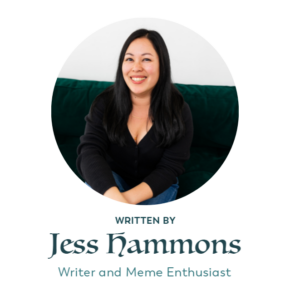Ah, the humble call-to-action, otherwise known as the CTA. It’s a simple button or link that moves your audience along their journey. To get to your website via your email? They click a CTA. To buy that product or service? CTA. To ask you a question? CTA.
CTAs don’t need much thought or strategy, right? As long as they’re present, you’re fine.
WRONG.
CTAs are essential for effective marketing campaigns. You need strong, clear CTAs to get the job done. Keep on reading to learn more.
What is a call to action?
Simply put, a call-to-action is a prompt that nudges the reader toward taking a desired action.
A CTA tells someone exactly what you want them to do. They can be used for tasks like:
- Submitting forms, like contact forms or signup forms
- Generating leads
- Learning more about your offers
- Opting in
- Buying your product or service
- Registering for a program or event
- Reading more of your content
CTAs usually look like hyperlinks or clickable buttons. That’s why they’re often short and straightforward phrases.
You’ve probably seen these common CTAs before:
- “Buy now”
- “Subscribe”
- “Schedule a call”
- “Contact us”
- “Sign me up”
- “Leave a review”
- “Browse all”
- “Keep reading”
These are common CTA prompts, but are they always the most effective? How do you create a call-to-action that really turns your site visitors into qualified leads and your leads into happy customers?
How to use calls-to-action effectively
Design your CTAs well
Your CTAs have to stand out instantly when someone glances at your content, so design is important here.
One easy way to make your CTAs eye-catching? Use contrasting colors. Dust off your brand style guide and look at your brand colors. If your sales page or landing page is a light neutral color, use a bold or dark color for your CTA. (Fun fact: Red CTA buttons are reported to perform the best.)
Similarly, you can jazz up your CTAs by using different fonts, including graphics like arrows, making them pop with soft shading, or simply making them big.
Just remember that your CTAs should be clear and easy to read above all when it comes to design. Give them plenty of white space, and don’t use super-fancy, illegible fonts.
And make sure they’re distinguishable from other elements on your sales pages, emails, or wherever they may be. Don’t place your CTA buttons or callouts near other elements, like shapes or icons, because people scroll. And when they scroll, they miss things, unless its starting them in the face. Arrows are fine because it subconsciously conveys “Hey look here!” but keep the margin around your CTA pretty clear. White space is more than just an aesthetic amount of space.
What about social posts?
Now, what if you’re including a CTA in a social media post where you can’t edit the design?
You can still draw attention to it with smart design. Use emojis or hashtags to capture your followers’ attention. Give your CTA plenty of white space in captions so that it’s easy to find among the text. Position your CTA where people expect it, either at the beginning or end of your post.
Speaking of positioning your CTA in the right spot…
Place CTAs strategically
Where should your CTAs go? Wherever they make sense in your content and copy so that your audience doesn’t have to go looking for it.
On landing pages, homepages and sales pages, we like putting a CTA above the fold so that readers don’t have to scroll to find it. But that’s not the only place your CTA has to live.
You can add a few others where your site visitors may expect them: after talking about the benefits of your course, for example, or after sharing a special offer for new clients or customers.
Don’t add too many CTAs, which can look overwhelming and spammy, to be honest. Less is more here. Just because you can add a CTA somewhere doesn’t mean you should. View your content from your reader’s POV so you can check whether your CTAs feel natural — or too pushy.
Be clear and accurate
No one wants to guess what’ll happen when they tap the button or click the link. Be accurate and clear when creating your CTAs. Use prompts that flow naturally with the copy around it.
For example, if you’re hosting a 30–day challenge, you’d have content explaining what your challenge is all about, ending with your CTA. The CTA should say something obvious like “Join the Challenge!” or “Save My Spot!”
This is not the place to put a CTA that says “Have questions? Contact us.” This kind of CTA doesn’t fit with what you were just talking about. It’ll only confuse your site visitors and probably make them bounce off your page.
On a related note, we recommend centering your CTA around your reader. It’s part of good storytelling. Use “I” language that speaks to their wants and needs. “I’m Ready” or “I Need This” may resonate with them more than “Sign Up Now” or “Buy Now.”
Have a strategy
When we say “have a strategy for your CTAs,” it doesn’t mean that you have to follow strict rules for what they look like and what prompts you use. In fact, it helps to diversify your CTAs so your audience doesn’t get bored.
We’ve seen a few business owners who like to have a schedule or system for their social media. Reels on this day, a graphic on the next day, a carousel later in the week, and so on. That’s totally fine! But your CTAs don’t have to be as rigid.
If you’re always asking your audience to click the link in your bio on Mondays and comment below on Tuesdays, things will get stale. Mix things up in your strategy and make it fun, just as you would with your content.
Plus, this type of strategy ensures that you’re not always asking your audience to do the same thing, whether it’s to buy, engage, or check out more of your content. That’s another way to bore your audience or drive them away.
Don’t neglect your CTAs
Calls-to-action tie your content together and get your reader to take that next step. CTAs move them along on their journey, turning them from random strangers on the internet, to fans or followers, to leads, to loyal customers.
CTAs have a big job to do! So, design and write them well, with your audience in mind. Place them in your content and copy where they make sense for your goals. Be clear, simple, and straightforward when prompting your readers to take action. That’s how you use CTAs effectively.
CTAs are just one piece of the content puzzle. They have to work well with your email marketing campaigns, sales pages, launch content — your content strategy all around! We can help you out with that. Get in touch with the Uncanny Content team today!

